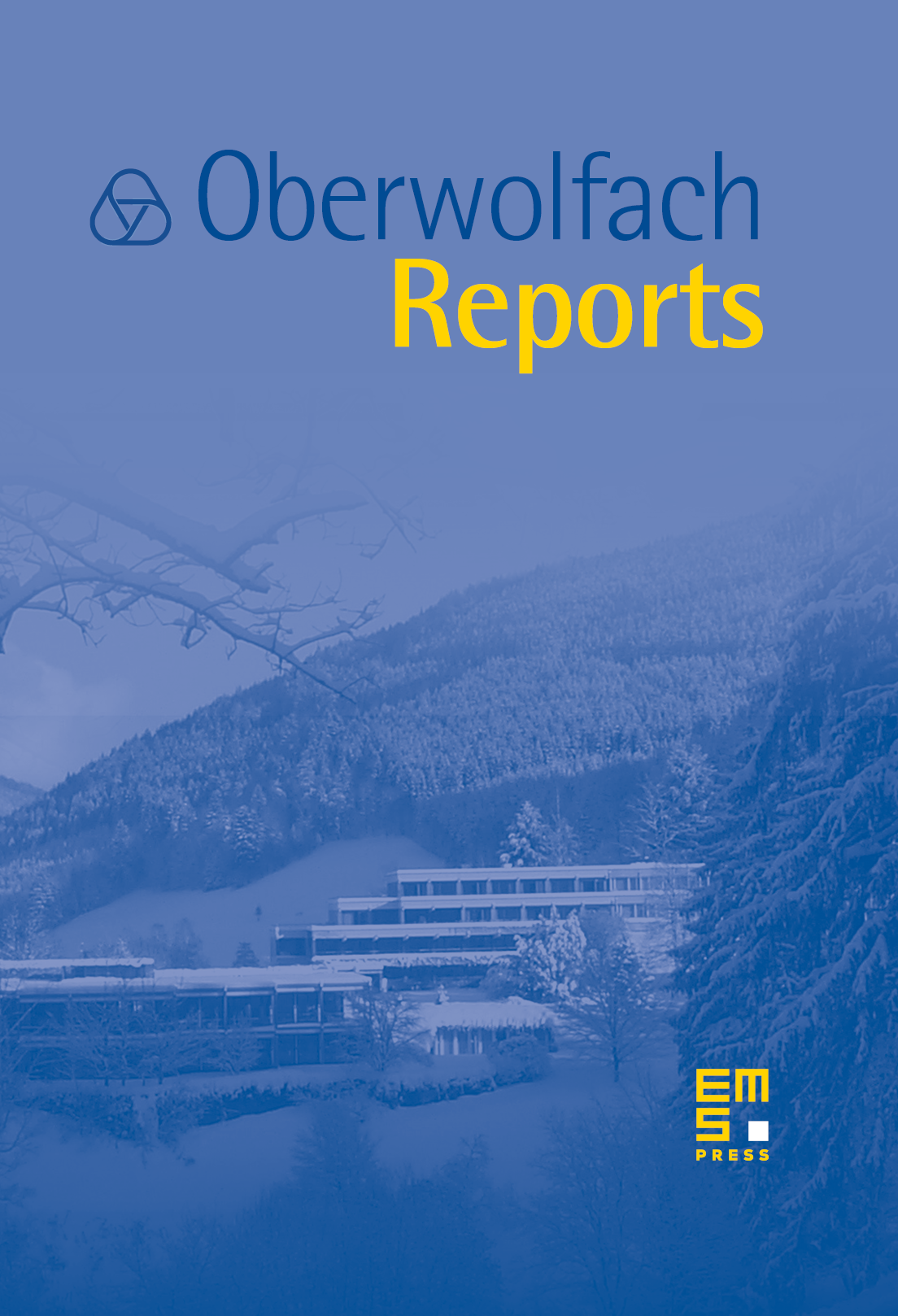Ehrhart Quasipolynomials: Algebra, Combinatorics, and Geometry
Jesús De Loera
University of California at Davis, USAChristian Haase
Freie Universität Berlin, Germany

Abstract
The mini-workshop Ehrhart Quasipolynomials: Algebra, Combinatorics, and Geometry, organised by Jesús De Loera (Davis) and Christian Haase (Durham), was held August 15th–21st, 2004. A small group of mathematicians and computer scientists discussed recent developments and open questions about Ehrhart quasipolynomials. These fascinating functions are defined in terms of the lattice points inside convex polyhedra. More precisely, given a rational convex polytope for each positive integer , the Ehrhart quasipolynomials are defined as . This equals the number of integer points inside the dilated polytope . The functions appear in a natural way in many areas of mathematics. The participants represented a broad range of topics where Ehrhart quasipolynomials are useful; e.g. combinatorics, representation theory, algebraic geometry, and software design, to name some of the areas represented.
Each working day had at least two different themes, for example the first day of presentations included talks on how lattice point counting is relevant in compiler optimization and software engineering as well as talks about tensor product multiplicities in representation theory of complex semisimple Lie Algebras. Some special activities included in the miniworkshop were (1) a problem session, a demonstration of the software packages for counting lattice points Ehrhart (by P. Clauss), LattE (by J. De Loera et al.), and Barvinok (by S. Verdoolaege), (2) a guest speaker from one of the research in pairs groups (by R. Vershynin),and (3) a nice expository event where each of the three mini-workshops sharing the Oberwolfach facilities had a chance to introduce the hot questions being pursued to the others. The atmosphere was always very pleasant and people worked very actively. For instance, two of the talks reported on new theorems obtained during the miniworkshop. The organizers and participants sincerely thank MFO for providing a wonderful working environment, perhaps unique around the world. We also thank Günter M. Ziegler for his support and encouragement. In what follows we present the abstracts of talks following the order in which talks were presented.
Cite this article
Jesús De Loera, Christian Haase, Ehrhart Quasipolynomials: Algebra, Combinatorics, and Geometry. Oberwolfach Rep. 1 (2004), no. 3, pp. 2071–2102
DOI 10.4171/OWR/2004/39